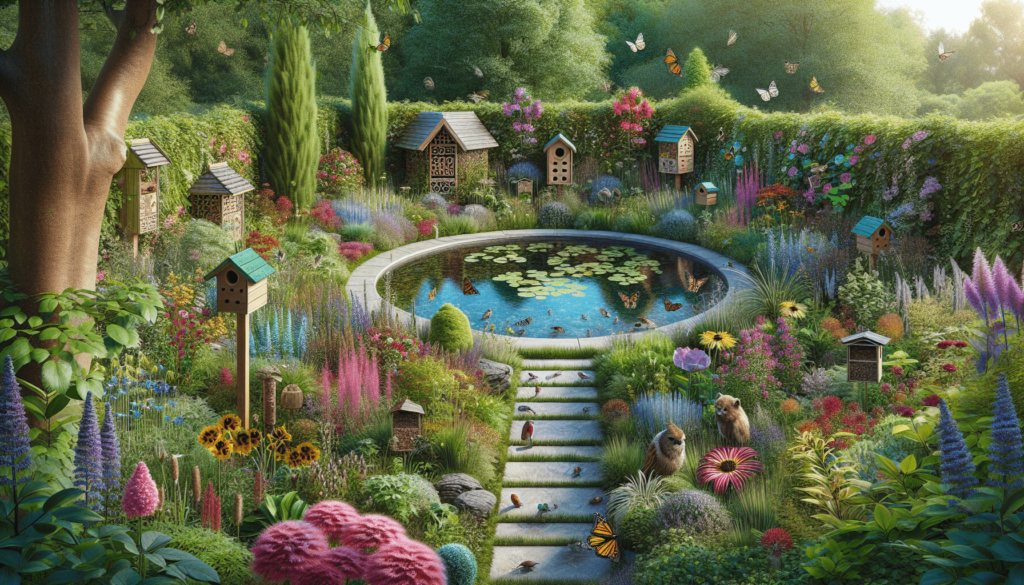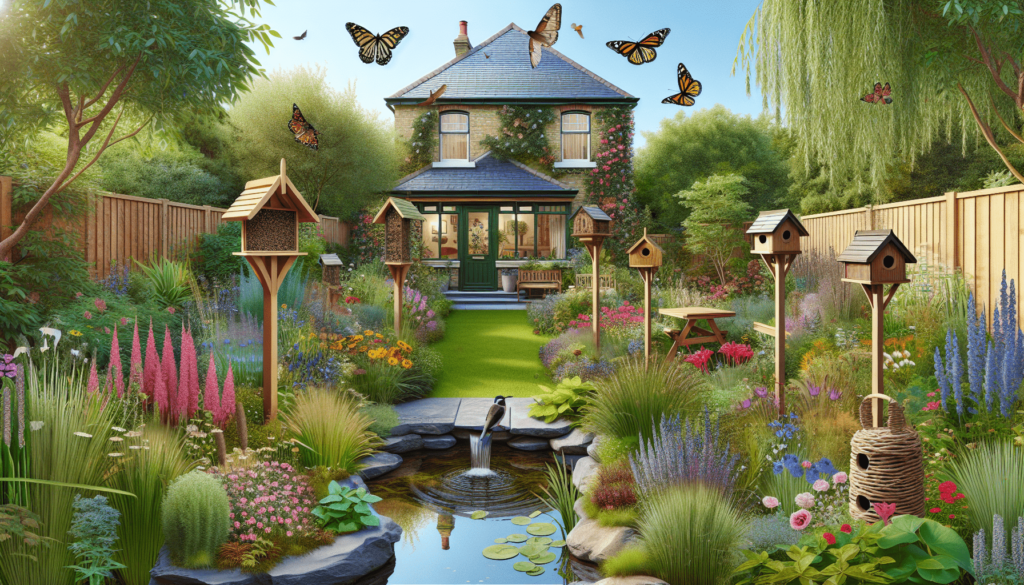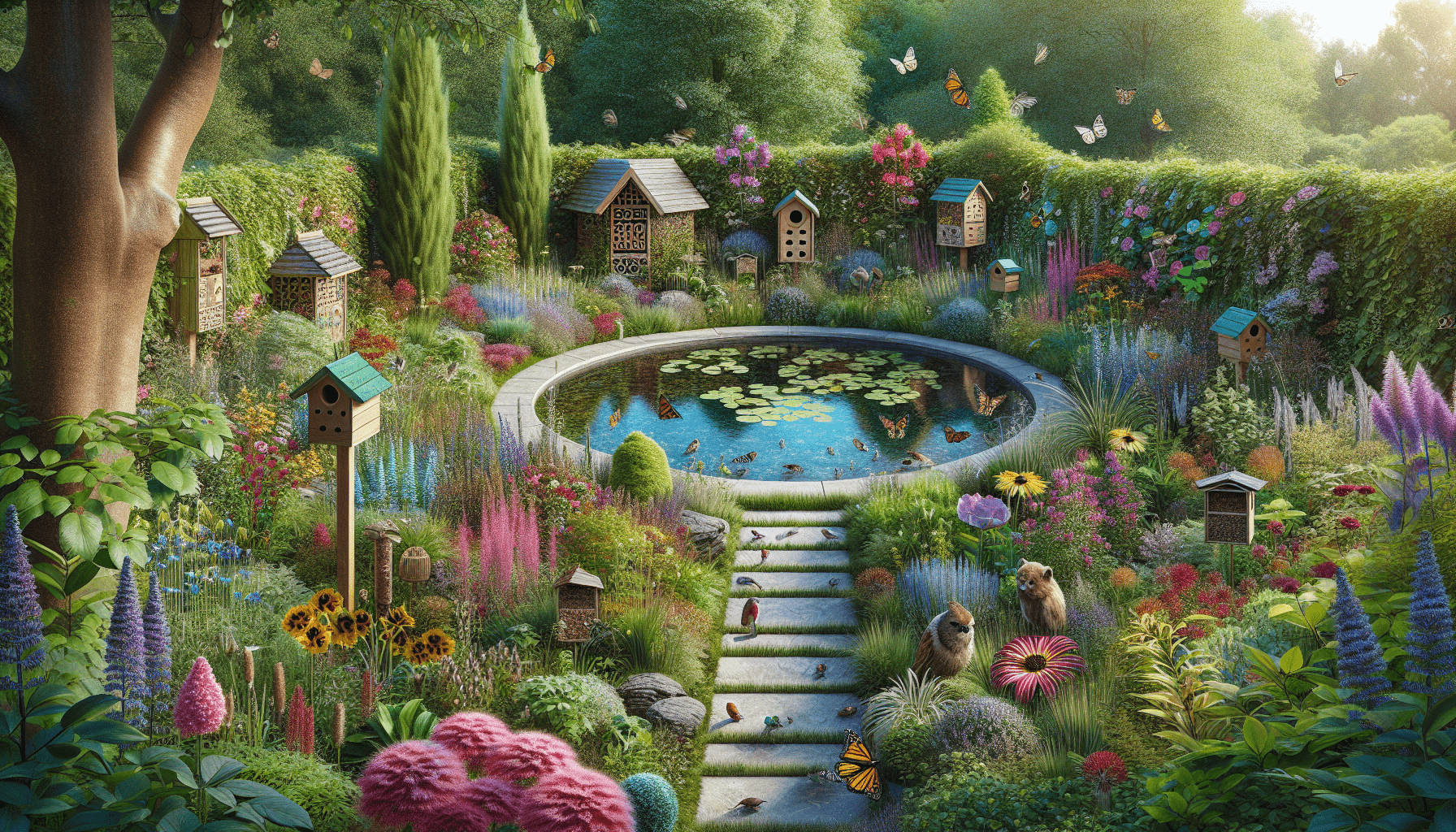Welcome to “Creating Wildlife-Friendly Gardens,” where you’ll discover how to transform your outdoor space into a sanctuary for local wildlife. By adding specific plants, providing essential water sources, and creating safe habitats, you can turn your garden into a thriving ecosystem. This guide offers practical tips that make it easy for you to support and enjoy the natural world right in your backyard. Let’s embark on this rewarding journey to create a harmonious and vibrant garden for all to cherish! Have you ever wondered how you could make your garden a sanctuary not just for yourself but also for local wildlife? Creating a wildlife-friendly garden can be a rewarding adventure that benefits you and the environment. From the vibrant butterflies that flutter around to the harmonious chirping of birds, making a few thoughtful changes can transform your garden into a haven for nature.

Why Create a Wildlife-Friendly Garden?
A wildlife-friendly garden isn’t just a treat for the eyes; it also provides crucial habitats for various species. With urbanization eating away natural landscapes, your garden could become a refuge for wildlife, offering food, shelter, and nesting sites. Plus, having a variety of plants and animals can improve the health of your garden, making it flourish like never before.
Benefits for You
A garden that hosts wildlife isn’t just nice to look at; it can also bring you closer to nature. You’ll find yourself becoming more aware of the incredible diversity that surrounds you. Watching bees pollinate flowers or birds build nests can be an incredibly satisfying experience.
Benefits for the Environment
By providing a sanctuary for wildlife, you’re contributing to the broader ecosystem. Species like birds, bees, and butterflies play significant roles in pollination and pest control. They keep the natural balance, making your garden as well as the local area more resilient and thriving.
Planning Your Wildlife-Friendly Garden
Before you start planting, a bit of planning can go a long way. Here are some steps to consider.
Assess Your Space
Take some time to evaluate what you already have. Note the existing plants, the sun and shade areas, and places where you could add water features or nesting boxes.
Choose Native Plants
Opting for native plants can make your garden much easier to manage while providing the best habitat for local wildlife. These plants are well-adapted to the local climate and soil, requiring less effort for you.
Create Layers
Incorporating different plant layers can serve multiple species. A combination of trees, shrubs, perennials, and ground cover can mimic a natural habitat, offering various shelter and feeding opportunities.
Add Water Features
A small pond or birdbath can make a huge difference. Water is essential but often overlooked in garden planning. Even a simple dish of water can attract a variety of birds and insects.
Provide Shelter
Wildlife needs places to hide from predators and harsh weather. Log piles, leaf litter, and rockeries can offer excellent hiding spots. Nesting boxes and bug hotels can also provide much-needed homes for birds and insects.
Essential Elements for Your Wildlife-Friendly Garden
Creating a garden that welcomes wildlife involves more than just planting flowers. Here’s a breakdown of the essential elements.
Food Sources
Different species have varying diet requirements. Plant a mix of flowers, fruits, and seeds to cater to a broad spectrum of animals.
| Food Type | Suitable Plants | Wildlife Attracted |
|---|---|---|
| Nectar and Pollen | Lavender, Echinacea, Bee Balm | Bees, Butterflies |
| Berries | Holly, Rowan, Elder | Birds, Small Mammals |
| Seeds | Sunflowers, Coreopsis, Coneflowers | Birds |
| Fruits and Nuts | Apple, Oak, Chestnut | Birds, Squirrels |
Water Sources
Adding water features can support an array of wildlife. A pond can host frogs and insects, while a birdbath can attract birds. Make sure to keep the water clean and fresh.
Shelter and Nesting
Providing shelter gives wildlife a place to live and breed. Birdhouses, bat boxes, and hedgehog homes can make a big difference. Also, leaving a bit of your garden ‘wild’ with longer grass or a log pile can be an excellent hiding spot for smaller creatures.
| Shelter Type | Details | Wildlife Attracted |
|---|---|---|
| Birdhouses | Simple wooden structures, various sizes | Birds |
| Bat Boxes | Narrow, slotted boxes, elevated placement | Bats |
| Insect Hotels | Layered materials like bamboo, wood, and leaves | Insects, Bees |
| Log Piles | Stacked logs and branches | Beetles, Amphibians |
Avoid Chemicals
Chemicals can harm wildlife, even in small amounts. Try to use natural alternatives to pesticides and fertilizers. Integrated Pest Management (IPM) can be a great way to control pests without harming beneficial insects.
Seasonal Changes
Your garden should cater to wildlife all year round. Different plants bloom at different times, providing continuous resources. Consider having winter-active plants and evergreens for seasonal interest and ongoing support for wildlife.
Engaging Wildlife in Your Garden
A wildlife-friendly garden can become a bustling hub of activity, creating endless opportunities for observation and interaction.
Bird Watching
Install bird feeders and birdbaths to attract a variety of birds. Different feeder types can attract different species, from tiny finches to large woodpeckers. Position them where you can enjoy watching but also in places that feel safe for the birds.
Butterfly and Bee Watching
Planting nectar-rich flowers can bring butterflies and bees to your garden. Try to have blooming plants from early spring to late autumn to provide consistent food sources. A quiet corner with a butterfly house can also offer shelter to these delicate creatures.
Observing Nocturnal Wildlife
Your garden doesn’t go to sleep when the sun sets. Hedgehogs, bats, and moths are just some of the wildlife you might encounter after dark. Using red or green spectrum lights, which are less disturbing to wildlife, can make nighttime visits even more exciting.
Recording Your Observations
Keeping a garden journal can be a fun way to track the different species visiting your garden. Note down dates, behaviors, and any changes you’ve made. This can help you understand what works best and provide valuable insights for future planning.

Enhancing Your Efforts
Creating a wildlife-friendly garden is an ongoing journey. Here are some ways to further enhance your efforts.
Community Involvement
Engaging your community can amplify your impact. Share your experiences with neighbors, join local wildlife groups, or participate in citizen science projects. Community gardens are also a fantastic way to spread biodiversity.
Keep Learning
The world of gardening and wildlife is vast. Continue to educate yourself through books, online resources, and local experts. The more you know, the more effective your wildlife-friendly garden will be.
Adapt and Innovate
Conditions and needs change over time. Stay flexible and be prepared to adapt your garden as you gain insights into what works best. Innovation can be as simple as trying new plant varieties or installing state-of-the-art bird feeders.
Overcoming Challenges
Every garden project has its hurdles, but don’t be discouraged! Here are some challenges you might face and how to overcome them.
Dealing with Predators
While attracting wildlife is the goal, you don’t want to invite predators that could harm them. Creating secure shelters and keeping an eye on your garden can help you strike a balance.
Weather Extremes
Weather can be unpredictable, affecting both plants and animals. Ensure your garden has drought-tolerant plants and adequate shelter. Mulching and watering during dry spells can help maintain a healthy environment.
Managing Weeds
Weeds can compete with your plants for nutrients and water. Manual weeding and mulch can keep them under control without using harmful chemicals.
Domestic Pets
Pets like cats can pose a threat to wildlife. Try to keep pets indoors during peak activity times for birds and other small creatures. Providing higher perches can also make it safer for birds to visit.
Conclusion
Creating a wildlife-friendly garden is more than just a hobby; it’s a way to contribute positively to your local ecosystem. By thoughtfully selecting plants, adding water features, providing shelter, and minimizing chemicals, you can create a space that attracts and supports wildlife all year round. The benefits extend not just to the environment but also to your personal sense of wellbeing, making your garden a true haven for nature and for you.


